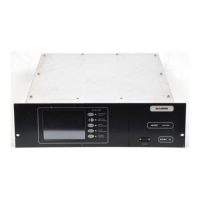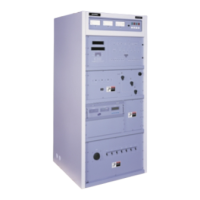4-6 888-2406-002
WARNING: Disconnect primary power prior to servicing.
Overall System Theory
4.3.2 IPA
The IPA amplifier and/or module is identical to any one of the PA modules except
that it has an amplifier on each side of the module whereas the PA modules only
have a single PA mounted on the module heatsink (the opposite side is empty). This
allows a PA module to be used in place of a failed IPA. The standard IPA
configuration includes dual IPA amplifiers, used in a main/alternate configuration
(in other words only one is used at a time). If one of the IPA amplifiers fails, the
controller will automatically switch to the second IPA with a minimal interruption
of service. For a detailed explanation of the RF amplifier operation refer to the
paragraph “Power Amplifier” later in this section.
4.3.2.1 IPA Power Output
The power output of the IPA determines the power output of the transmitter and is
varied by changing the gate bias on the IPA amplifiers MOSFETs. The gate bias for
the IPA is adjusted by the controller, specifically the Master Controller Board, using
the front panel “POWER” Raise and Lower controls.
4.3.2.2 IPA Power Supply
The IPA power supply is +52 volts from the PA power supply. The +52Vdc is
connected to the IPA(s) via the IPA Backplane Board. If the transmitter is
configured with the optional Dual Power Supply Configuration, the +52Vdc for the
IPA is diode OR’ed from both supplies for redundancy.
4.3.3 IPA Backplane
Refer to the IPA Backplane schematic for the following. The IPA module plugs into
the IPA Backplane Board. This board interfaces all inputs and outputs for the IPA
module. It is also responsible for:
a. Main/Alternate exciter switching (only active with dual exciter configura-
tion).
b. Main/Alternate IPA switching (active with standard, dual IPA configuration).
c. Monitoring of IPA temperature, voltage, current and forward power.
d. Air flow sensing
e. Ambient temperature sensing
f. IPA 1 and IPA 2 interlocking
